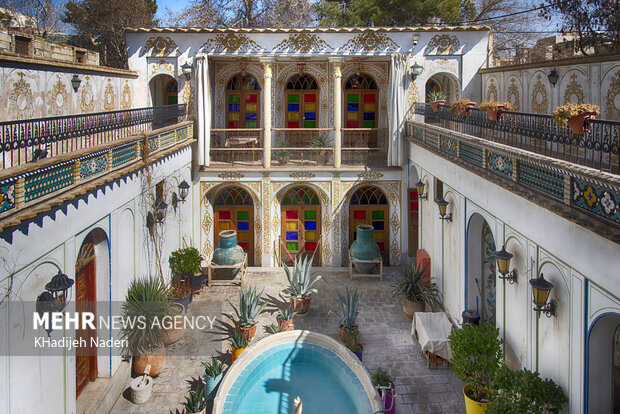Water shortage a threat to Isfahan's historical houses

TEHRAN--Isfahan, a magnificent city of thousand-year-old architecture, is today on the verge of a crisis that quietly and silently but destructively threatens the life of its historical body: land subsidence, a phenomenon that has become one of the most dangerous challenges facing the city due to the water crisis, excessive extraction of groundwater, and the collapse of the traditional irrigation system.
Visible cracks in some walls of the historical houses, the gradual subsidence of domes, and the threat to the stability of the columns of mosques are just some of the alarm bells that have been sounded for cultural Isfahan.
Mohammad Reza Rezaei, a geologist and hydrogeologist, said in an interview with Mehr news agency: “Land subsidence in Isfahan is the result of the destruction of the natural balance of underground aquifers. When the withdrawal from authorized and unauthorized wells in the Zayandeh-Rood basin exceeds the recharge rate of these aquifers, the pressure within the alluvial layers decreases and soil particles are compressed. This gradual but irreversible process drastically changes the subsurface structures.”
Rezaei emphasized that the historical fabric of Isfahan, especially in the areas of Chaharbagh Paein, Jame’ Mosque, and the Grand Bazaar, is located exactly on active subsidence belts. This fact poses a serious threat to huge domes, arched structures, adobe and brick walls, and even bridge foundations, he added.
The hydrogeologist also explained technical solutions: “Installing permanent GPS stations in the vicinity of important buildings, conducting radar imaging on a monthly basis, and modeling soil behavior can provide an accurate risk map.”
The archaeologist and restorer of historical buildings considered the phenomenon of subsidence a serious threat to each of the city’s historical architectural elements, saying: “The hairline cracks that we see today on the walls of historical houses and public buildings are sometimes a precursor to major subsides.
The historical architecture of Isfahan, especially during the Safavid period, was based on traditional materials such as adobe, brick, plaster, and lime mortar; materials that are not very resilient to horizontal displacements or vertical settlements.
Referring to the damage observed in the historical structures of Naghsh-e Jahan Square, he stated: “Buildings such as Sheikh Lotfollah Mosque and the Abbasi Grand Mosque are extremely sensitive to settlement heterogeneity due to their huge domes. If even one of the load-bearing pillars or columns is involved in asymmetrical settlement, the load distribution will be disrupted and the dome will crack or split.”
The restorer said that it is essential to develop a comprehensive plan in cooperation with the Geological Survey and Mineral Exploration of Iran (GSI), the Ministry of Cultural Heritage, the Housing Research Center, and scientific institutions to not only accurately document the damaged works, but also design the restoration process with considering the possible landslides.
Because many past restoration plans were carried out without considering the dynamics of the earth and are no longer responsive today, he added.
Once a crossroads of international trade and diplomacy, Isfahan remains one of Iran’s most prominent tourist destinations. It is renowned for its breathtaking Islamic architecture, including stunning mosques, palaces, and bazaars. Visitors can explore Persian gardens and walk along the city’s tree-lined boulevards, soaking in the beauty and history at every turn. The city’s architectural marvels, such as Naghsh-e Jahan Square—one of the largest squares in the world—make it a jewel of town planning.
Isfahan is known as “Nesf-e-Jahan,” or “half the world,” symbolizing its historic significance. The Zayandeh-Rood River, often called the city’s “life-giving river,” adds to the city’s natural beauty, enhancing its allure for tourists.
Isfahan is a treasure trove of architectural wonders and a hub of handicrafts. The city was once a crossroads of international trade and diplomacy in Iran and now it is one of Iran’s top tourist destinations for good reasons.
Chahar Bagh Boulevard, constructed during the Safavid era, is one of Isfahan's most iconic landmarks. Often compared to Paris’s Champs-Élysées, the avenue stretches approximately 6 kilometers, connecting the northern and southern parts of the city, with the historic Hasht Behesht and Chehel Sotoun gardens on its eastern side.
KD
